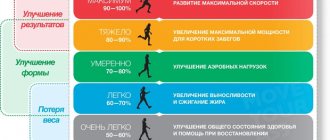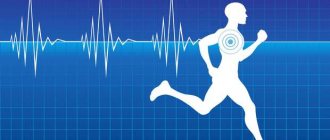Secrets from the pros.
Hello! “Three Cripples” is in touch and the third running season, which we are doing together with adidas: we tell beginners how to motivate themselves for their first run, how to run correctly, how not to get injured and much more. Experts and coaches from the AR Moscow running community help us.
Not all the texture fit into the audio, so we publish the best highlights of the episodes with Vasily Permitin and Sardana Trofimova in text.
What is long-distance running and how to prepare for it
Vasily Permitin: According to official terminology in athletics, long distances are 5,000 and 10,000 meters and a half marathon. But usually this includes the marathon. Interesting fact: when we talk about running at a stadium, we talk about the distance in meters – running 5,000 and 10,000 meters. If we talk about the highway – 5 km, 10 km. Some people don't know this and get confused.
The main feature of long distances is that they are run in an aerobic mode. Therefore, during preparation, a large volume of slow running is necessary to build an aerobic base. This is the basis without which it is impossible to overcome the distance normally. Well, that is, you can run, but to run fast or improve your personal best, you need to run at a calm, slow pace. The volume should increase smoothly.
Then we add intensive developmental training, which should be built in in doses and combined with slow volume running. And you can also add strength training to prevent injury in the first place. Nowadays, cyclic sports, especially running, are very popular, and people who get off the couch immediately begin to fanatically run a lot, run fast, and this leads to injuries due to an incorrect balance in training and the lack of a sports base.
How the heart works while running
The heart is a muscle, which means, like any other muscle, it can be trained.
When we run, the body's (and muscles') need for oxygen increases significantly, which means the heart must deliver a larger volume of blood to them than at rest. The unit of measurement here is usually taken as the minute volume (MV), that is, the volume of blood that the heart can “distill” in one minute. It is calculated using a simple formula:
MO = SV x HR
What are these scary abbreviations? Let's explain.
Stroke volume (SV) is the amount of blood that the heart pumps out in one beat.
Heart rate is the number of heart beats per minute (almost the same as pulse). You can learn more about heart rate here.
As these indicators increase, the minute volume of blood also increases. It would seem that this is what we are trying to achieve? If heart rate increases, will minute volume also increase? Will the muscles receive more blood, will the body be able to cope with the load better? Not certainly in that way. When we run for a long time at a high heart rate, we simply do not allow the heart to rest between beats; it does not have time to pump enough oxygen, and we rather harm it than help it develop.
Why do adults run long distances?
Vasily Permitin: In amateur sports, it so happens that everyone thinks it’s cool to run a marathon, so everyone starts running long, very long distances.
Basically, of course, everyone runs half-marathons and marathons, but there is also a trend for short distances. Just because they're short doesn't mean they're lighter or less prestigious. There are amateur competitions at the stadium, or, for example, we in the adidas Runners community hold the night mile - a cult race that was invented in the USA. This is a very cool format when you get up to the start line and all you know is that you have to run a mile. But the distance is not marked in any way. You run, and along the way they show you: turn this way, then that way. We have already done something similar in Moscow and will continue to do so.
If you look at professional sports, then when a child comes to athletics as a child, he starts with shorter distances in order to receive a dosed load and develop speed-strength qualities. They develop well in childhood, and after some time, around the age of 18, it is already very difficult to develop them. Therefore, the speed-strength base is laid in childhood, and children run short intense distances - sprints and medium distances, 800 m - 1,000 - 1,500 - 2,000, well, maybe 3,000 meters.
Then, with well-developed speed and strength qualities, children run more and add training volume. A frequent situation is when, up to a certain age (including adulthood), a professional athlete runs 1500-3000-5000-10000 meters. Only then does it move on to the half marathon. Many strong marathon runners, as a rule, were “average” athletes in the past.
How to learn to run at a low heart rate
You need to start slow running to lose weight or prepare for a competition gradually. Try just walking first, then practice jogging.
Monitor your cadence (how often your feet touch the ground per minute). It should be in the range of 160 - 180 or higher!
If you take too wide steps, try to move your arms more often - your legs will adjust.
Monitor your heart rate and take a step if necessary.
You can come up with a game for yourself like: “how slow can I run?”, “how long can I maintain my target heart rate?”
Listen to your favorite music, podcasts, and chat with running buddies to ease boredom during your slow run.
Pulse zones
Vasily Permitin: There are many classifications. Standard – 5-zone. All others are derivatives of it.
1 pulse zone - from 55 to 75% of the maximum pulse (hereinafter referred to as heart rate, heart rate - editor's note). There is a formula for calculating maximum heart rate (220-age), but it is quite conditional; it is better to do laboratory testing. The easiest way to calculate zones is to run some distance like 5 km very quickly, look at your maximum heart rate and calculate from there.
The first zone is restorative, aerobic, that is, energy supply occurs in an aerobic mode, with the help of oxygen. It is used for recovery, warm-up, cool-down. Everything is at a calm pace.
Pulse zone 2 (75–85% of max. heart rate - editor's note) is also low-intensity, but it uses fat as fuel to the maximum; this zone is relevant for the development of endurance. We do long training sessions there.
Between zones 2 and 3 is the aerobic threshold.
Pulse zone 3 (85–90% of max. heart rate - editor's note) is mixed, also called the “gray zone” or “black hole”. This is the pulse zone in which 50% fat and 50% carbohydrates are consumed. The peculiarity is that this is a high-intensity zone: the energy consumption in it is very high, but it feels comfortable - it is very easy to get into it.
Stephen Seiler, a sports scientist from the United States who has lived in Norway for more than 25 years, developed the concept of 80/20 - a ratio of low-intensity and high-intensity training. Over many years of research, he found that in all cyclic sports (cycling, skiing, athletics, rowing, swimming), as a rule, athletes intuitively came to the conclusion that they train 80% at low intensity, and 20% at high intensity. .
Stephen says that if you want to get into an overtrained state, the shortest route is to train in a mixed zone every day. It feels quite light, but at the same time it is quite expensive. The deceit lies in the fact that a person does not feel when he gets there. If you use it for developmental training, that is, consciously, then everything is fine, it is effective. But if you run in it during a light workout, you may end up overtraining over time.
Between zones 3 and 4 there is a boundary called the “second lactate threshold” or “anaerobic metabolism threshold,” abbreviated as PANO. This is a key value for endurance sports and directly correlates with performance.
Zone 4 (90–95% of max. heart rate - editor's note) is anaerobic, in which energy supply occurs without the participation of oxygen, due to 100% carbohydrates. The whole point of endurance training is to move the TANO (offensive boundary of zone 4).
PANO is expressed in pulse values. My PANO is about 183 beats per minute. How to track progress: The longer I train, the faster I should run at this heart rate. For example, at the beginning of training, my running pace on PANO (at a heart rate of 183 beats/min) can be 3:20/km, and as my fitness increases, it can be 3:10-3:05-3:00/km. The higher it is, the better.
Zone 5 (95–100% of max. heart rate - editor's note) is a high-intensity zone, called the MOC zone - maximum oxygen consumption. It is not particularly relevant for beginner athletes - they should have virtually no training in this zone.
How to measure?
A little later we will look at running at a low heart rate, the pros and cons, but now, let’s talk about how to measure it correctly. You have two ways: manual and mechanical.
- If done manually, you will need to stop and place two fingers on your neck where the carotid artery passes. Time 15 seconds on the clock and count the number of beats during this time. The resulting figure is multiplied by 4.
- The mechanical method involves the use of gadgets. There are wrist-based heart rate monitors, which are less accurate, and those equipped with a chest sensor - these are the most accurate. These devices will do all the work themselves. They will calculate your heart rate throughout the entire workout, create a colorful graph, and tell you where and when you deviated from the norm. We recommend that you buy a running watch with a heart rate monitor - you definitely won’t regret this purchase!
So, we figured out what is considered acceptable maximum heart rate when running for men and women, and found out how to measure it correctly. Now, let's talk about the concept of low heart rate.
Running technique
Vasily Permitin: Running technique develops for a combination of reasons and does not change. Anthropometry, muscle development, structural features, and psychology greatly influence the movement pattern. You can slightly adjust your running technique and work on it through general physical training, strength and jumping training, and special running exercises.
At adidas Runners we have a separate service - running technique analysis. You can analyze the technique and identify some gross mistakes that a person is making right now: for example, he is running on his toes. Running from the toe overloads the Achilles tendon and periosteum. Or a person runs from his heel and bumps into it - this is a huge load on the musculoskeletal system, which can lead to injury.
The technique can be adjusted, but not changed, the movement pattern will still remain as it is. In general, running technique optimizes and becomes more effective as your form and training volume grow.
You need to run naturally, breathe through your mouth and nose. And then some run and suffocate: they say you have to breathe through your nose.
Why is it necessary to monitor your pulse?
An accurately measured heart rate will allow you to calculate the number of calories burned during a workout. Thanks to this, classes can be made as effective as possible.
An increased heart rate indicates that the load on the body exceeds the permissible limits, and this can lead to undesirable consequences. Underestimated indicators are an indicator of the ineffectiveness of classes, and, therefore, their uselessness.
Low load will not allow the heart muscle to fully pump blood, saturating the body with oxygen and nutrients. Metabolic processes will slow down.
Interval and tempo training
Vasily Permitin: Interval and tempo training is the main type of developmental training that athletes use to improve results. All plans consist of a combination of low-intensity and high-intensity training.
Tempo training is running in a threshold zone, usually at the beginning of the 3rd, that very mixed, or between the 3rd and 4th zones at the threshold of anaerobic metabolism. This is a fairly long moderate-to-hard run. The intensity is best controlled by pulse. Very often amateurs make the mistake of running tempo training in zone 5, but this has nothing to do with tempo running - this is already a competitive mode.
Interval training is aimed at developing slightly different qualities. As I already said, the threshold for anaerobic metabolism can be developed and shifted with different training protocols. Accordingly, interval work can be either speed work to develop speed qualities and the ability to run quickly, or work to develop the ability to run for a long time at high speed. Due to this, the anaerobic threshold shifts. Depending on the tasks, the intensity and duration of fast segments, as well as the duration of rest intervals, are selected.
Peculiarities
Tension varies; it depends on the force with which the body is forced to move in the process. By increasing speed, the body increases its need to absorb the substances it needs and changes ongoing physiological processes.
The heart is capable of pumping blood at different speeds. When the stress on the artery walls increases during exercise, the heart rate increases.
If you run, your normal heart rate will be higher than if you sit on the couch, which is logical. This is in a completely healthy and trained person. For people who are overweight, have a fever or other problems, it is even higher. But for such categories, an adjusted plan for working on oneself must be created separately.
What to do if your sneakers rub
Sardana Trofimova: Your feet may chafe because the sneakers are new and not yet worn in. You also need to be careful during long workouts: when you run for a long time, you sweat, and salt comes out. It can lead to chafing.
That's why before every long workout and before a marathon, I smear Vaseline on all my fingers, between my fingers and in places where it might rub. Sometimes even my top rubs. Therefore, I smear any places where chafing may occur with Vaseline - it’s enough for me for the entire distance, I can easily run a marathon.
I would also like to advise amateurs not to wear new sneakers and new socks to the competitions. You definitely need to wear them for at least a week, and run in them at least a couple of times, so that the sneakers become softer. And you also need to run in new socks at least three times and wash them.
How to dress for different weather
Sardana Trofimova: We have a cold winter in Yakutsk, so at home I train down to -30°C. When it’s very cold, I leave for training camp. I dress so that when I go outside I don’t feel hot. It should be a little chilly. If you dress warmly, you will sweat a lot, and at the end of the distance you may get winded.
We also run at -50°C, but there we need completely different equipment. This is extreme for most amateurs, but it also has its advantages, because in addition to training functionally, you also train your muscles: you have a lot of clothes, they interfere with movement. When you run in the snow, you feel slippery, and you also improve your physics.
Why aerobic exercise?
Aerobic exercise
- these are exercises that are performed for a long time, with moderate load, in conditions of increased oxygen consumption by the muscles.
When performing such exercises, high-quality training of the cardiovascular system occurs. Therefore, another name for aerobic exercise is cardio training
.
It is aerobic exercise that best burns subcutaneous fat. This type of exercise is perhaps the most natural type of physical activity. No special machines or unnatural poses, as with barbell exercises. Aerobic exercises can be done anywhere: at home, on the street, in the gym. These types of exercise include: jogging, cycling, race walking, swimming. So why is aerobic exercise so beneficial? We have already talked about the benefits for the heart and fat burning, but this is not the only reason why cardio training is good for the body. The large amount of oxygen that enters the blood during exercise increases metabolism
.
The muscles become stronger and their elasticity improves at a faster rate. The intensity of the cardiovascular system
. Increases efficiency and mood, improves sleep.









